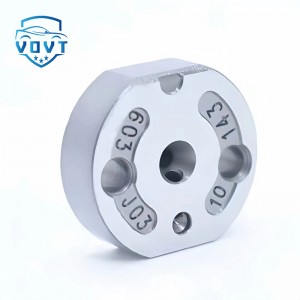New High Quality Diesel Nozzle DLLA148P816 for Injection Nozzle Diesel Engine Parts 093400-8160
Products Description
| Reference. Codes | DLLA148P816 |
| Application | / |
| MOQ | 12PCS |
| Certification | ISO9001 |
| Place of Origin | China |
| Packaging | Neutral packing |
| Quality Control | 100% tested before shipment |
| Lead time | 7~15 working days |
| Payment | T/T, L/C, Paypal, Western Union, MoneyGram or as your requirement |
Fuel injector nozzle
Structure and type
Structure: The injector nozzle is mainly composed of valve body, needle valve, return spring, armature, solenoid coil, oil inlet filter and wiring harness connector.
Type: According to different structures, it can be divided into axial needle type, ball valve type and plate valve type. The axial needle of the axial needle injector can make the fuel spray out in a ring shape, which is conducive to atomization, and the needle valve reciprocates in the nozzle, which is not easy to cause nozzle blockage; the ball valve stem of the ball valve injector is a hollow stem, light in weight, and the ball valve has an automatic centering function and has a high sealing performance; when the solenoid coil is not energized, the valve plate of the plate valve injector is pressed against the valve seat by the spring force and fuel pressure.
Working principle
The injector is a normally closed valve. When the solenoid coil is not energized, the needle valve is pressed against the valve seat under the action of the return spring to close the spray hole. When the electronic control unit (ECU) issues an injection command, current flows through the coil in the injector nozzle, generating a magnetic field. The magnetic field force overcomes the spring force to suck up the needle valve, open the spray hole, and the fuel is sprayed out at high speed through the annular gap between the needle pin at the needle valve head and the spray hole, forming a mist, which is conducive to full combustion. When the ECU stops sending the injection command, the current is interrupted, the magnetic field disappears, and the needle valve quickly returns to its position under the action of the spring force, closes the spray hole, and stops injecting fuel.
Function
Precisely control the amount of fuel injection: According to the engine's operating conditions, such as load, speed, etc., the ECU accurately controls the opening time and frequency of the injector nozzle, thereby accurately controlling the amount of fuel injected into the combustion chamber, ensuring that the engine can obtain a suitable air-fuel ratio under various operating conditions to achieve good power performance, fuel economy and emission performance.
Atomize the fuel: Spray the fuel into the combustion chamber in the form of mist, increase the contact area between the fuel and the air, and allow the fuel to be more fully mixed with the air, thereby achieving more complete combustion, improving combustion efficiency, and reducing carbon deposits and harmful gas emissions.
Common faults and causes
Blockage: Carbon deposits in the engine are deposited on the injector nozzle, or impurities in the fuel block the injector nozzle passage. Urban traffic congestion, cars are often in low speed and idling state, which will aggravate the formation and accumulation of these deposits.
Poor injection atomization: It may be due to low injection pressure, wear of the spray hole or spring problems, resulting in inaccurate injection time control, affecting the atomization effect of the fuel, and then affecting the combustion efficiency and performance of the engine.
Needle valve stuck: Diesel is not clean, there are impurities in the high-pressure oil pipe, so that the needle valve pair is not closed tightly, the high-pressure gas in the combustion chamber is reversed, and the needle valve pair is burned; the engine temperature is too high, resulting in poor cooling of the injector; the oil outlet valve is worn, causing the injector to drip when it stops spraying, causing the injector nozzle to burn and deposit carbon, etc., which may cause the needle valve to get stuck.
Maintenance and care
Regular cleaning: It is generally recommended to clean it every 20,000 to 30,000 kilometers, which can be determined according to the vehicle usage and fuel quality. You can use a cleaning agent containing benzene or benzene aromatics for additive cleaning, or you can remove the fuel injector for professional cleaning.
Use high-quality fuel: Choose fuel with qualified quality and high cleanliness to reduce impurities and colloids in the fuel, which will help prevent the fuel injector from clogging and carbon deposits, and extend the service life of the fuel injector.
Timely maintenance: When you find that the engine has abnormal conditions such as reduced power, increased fuel consumption, unstable idle speed, and poor acceleration, you should check the fuel injector in time. If there is a fault, it should be repaired or replaced in time.

























